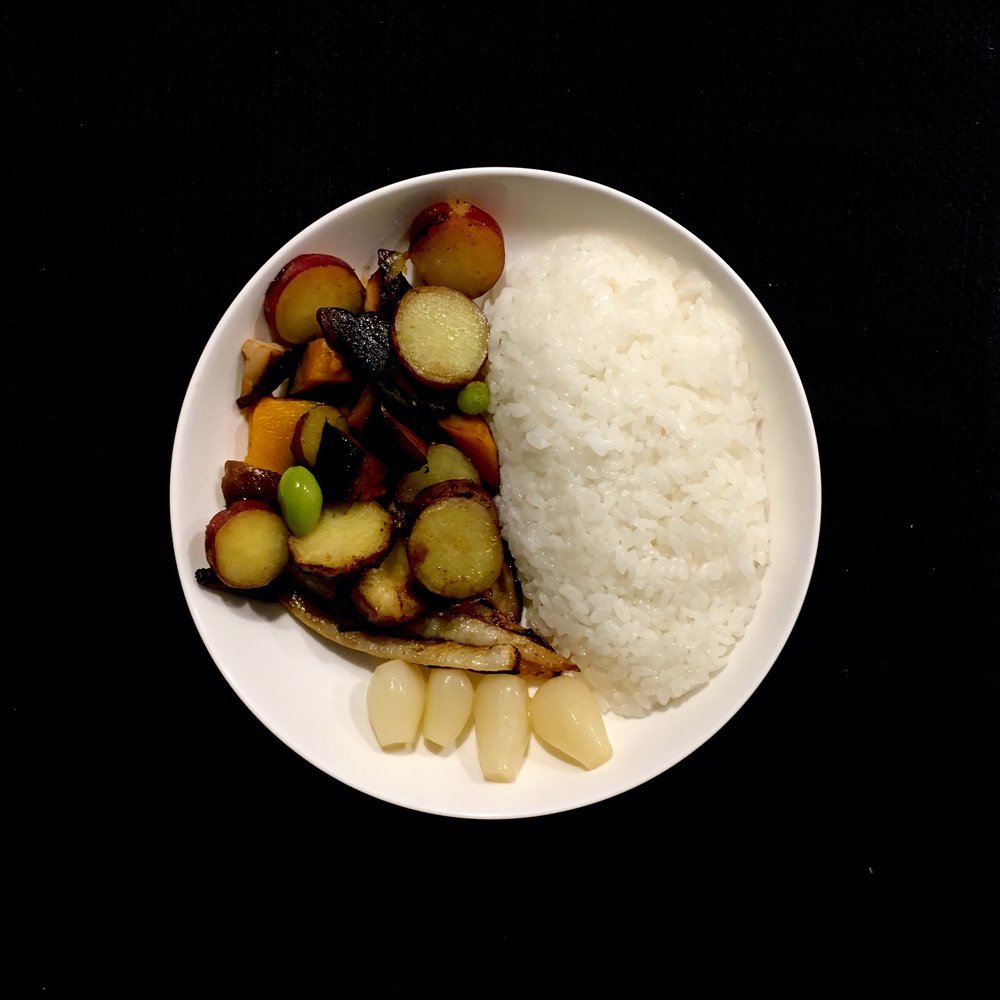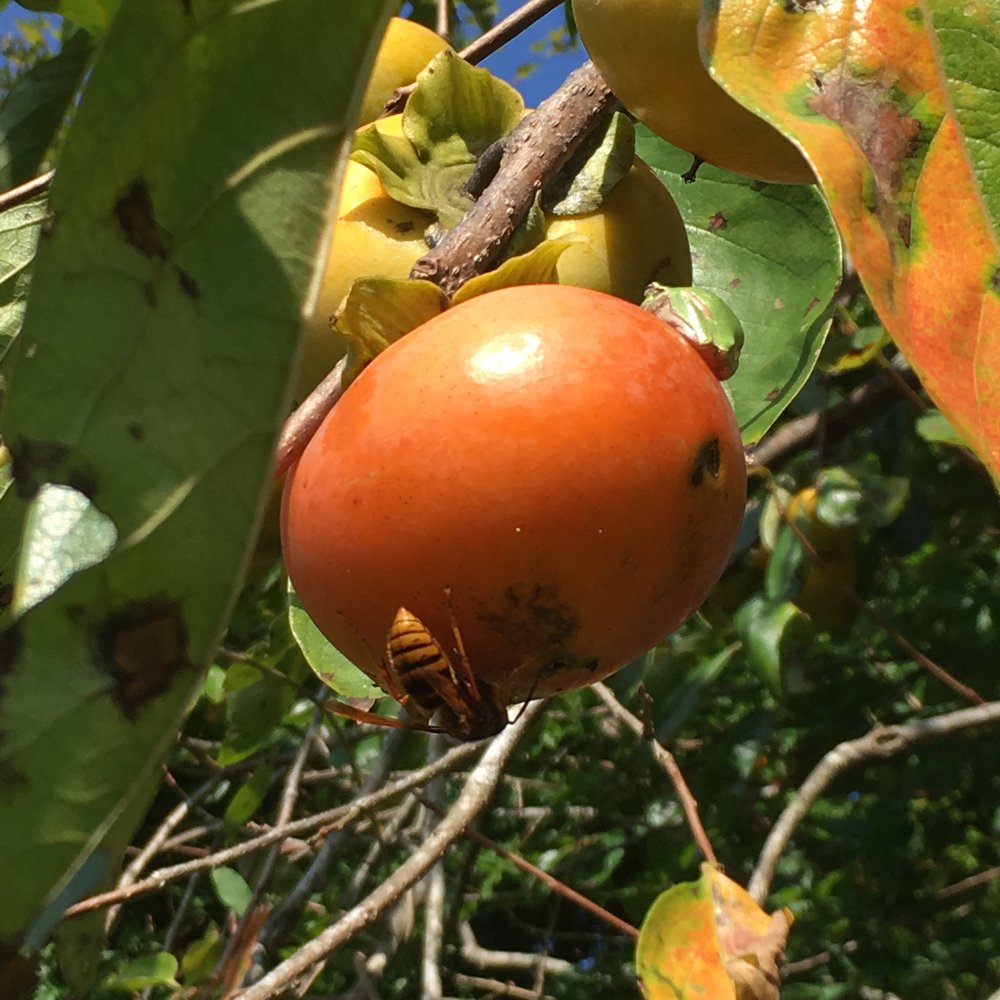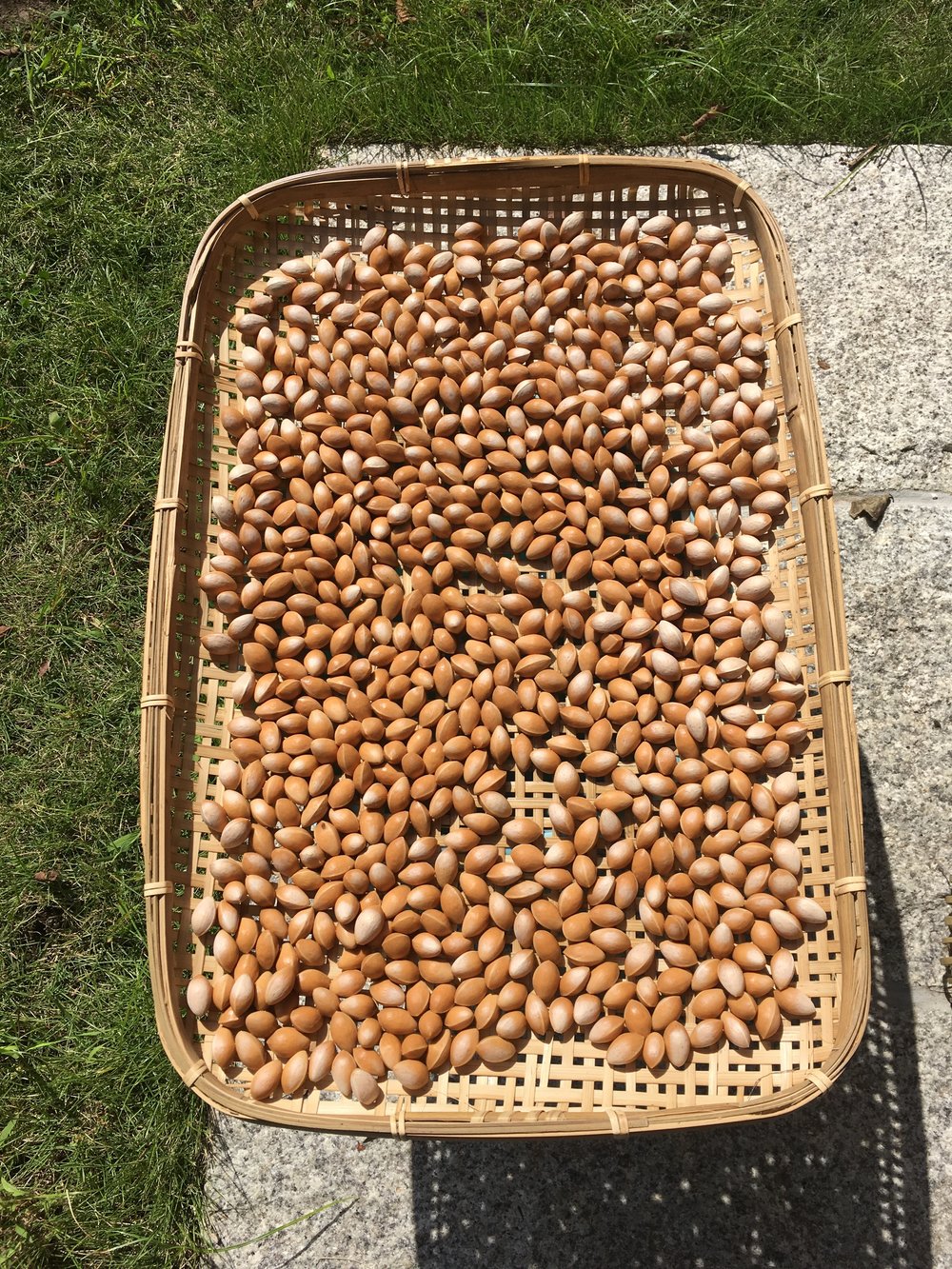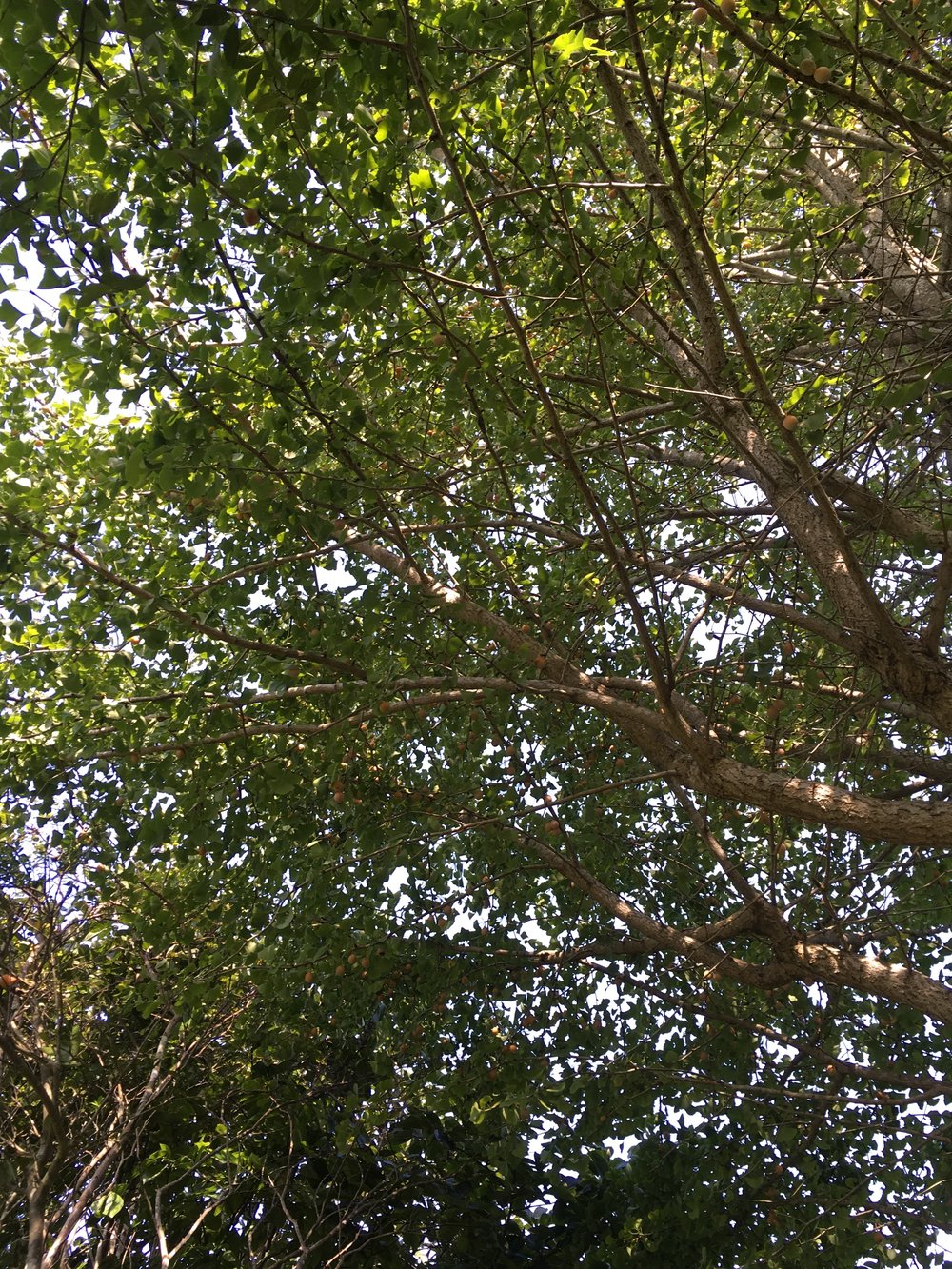There is one thing that I always think about cooking when in a rush to prepare our meals and want to eat some Japanese food, it’s simple seasonal vegetables sautéed, deglazed in a bit of soya sauce, served with rice and pickles. It is so very simple and yet so delicious that it beats any other recipe. It requires no thinking, a very short preparation for the vegetables and then everything in a pan with a few drops of oil, under cover, just stir once in a while. Which frees the hands to do something else! Perfect when the week is super busy with many deadline at work, friends and family visiting, a weekend away in preparation and A. leaving for Europe for 10 very long days…
Autumn version of sautéed vegetables (one plate dish for 2 people)
– 1 Japanese sweet potato
– 3 shiitake
– 2 little turnips (long or round)
– any other seasonal vegetables: a little piece of kabocha, a few green beans, gingko nuts, shishito, eringi…
– 2tbs of soya sauce
– some vinegared pickles: I love rakkyo (Chinese onions) which are served with curry.
– 1 cup of Japanese rice
Star cooking the rice. Wash and cut the vegetables. In a pan greased with a bit of oil add all the vegetables (except if some have very short cooking time like green beans) cook at high heat for two minutes and stir. Lower the heat and cover. Cook for 12min and stir once in a while. Add the soya sauce, and stir for one minute. Serve all together.




